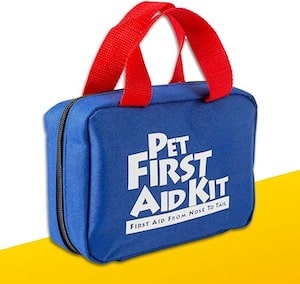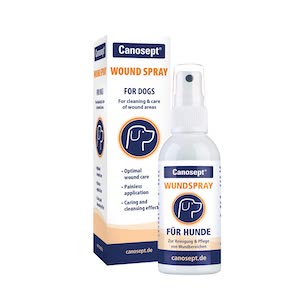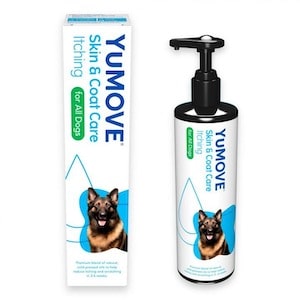When our furry friends get injured like minor cuts, bites, or scrapes on their skin, our first instinct is to use antiseptic on them. If you have TCP you will try and use it on wounds. But, there is always a concern in your mind while using such an antiseptic. So, Can you use TCP on dogs?
Can You Use TCP on Dogs? A Guide to Antiseptic Safety for Pets
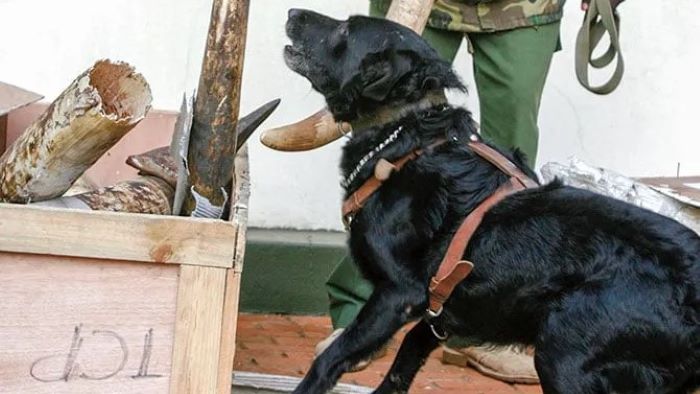
Key Takeaways
- TCP is an antiseptic that contains phenol, which is toxic for dogs.
- TCP can damage the skin, blood vessels, and organs of dogs, and hinder the wound healing process.
- TCP should only be used in diluted form and for minor wounds, and only after consulting a vet.
- TCP poisoning can be fatal for dogs and requires immediate medical attention.
You Might Also Like:
Can You Use TCP On Dogs?
In general, TCP is considered safe to use but, there are substances present in this liquid antiseptic which are toxic for dogs. It helps in soothing pain and tackling infection in wounds but, not using the original solution. There is a specific requirement for using TCP for treating a dog’s wound.
So, to get a better understanding, here is a profile for TCP:
- Active Ingredient – trichlorophenylmethyliodosalicyl
- Usage – for disinfecting wounds and infections in people, not suitable for dogs
- Effect – If ingested by dogs, it becomes toxic for dogs. It can cause seizures, diarrhoea, liver damage, and sometimes death.
- Alternative names – TCP liquid Antiseptic, TCP Ointment, TCP Original Antiseptic Liquid
- Manufacturer – Omega Pharma Ltd.
Now, let’s have a peek at reasons why it’s not recommended for dogs.
- TCP retains phenol and is harmful to dogs. Phenol can damage the kidneys, liver, and nervous system of animals. So, if your furry friends ingest TCP, they are likely to face such issues.
- It can damage the skin cells of dogs and cause inflammation, blistering, and pain. In addition, it also kills hair follicles which results in fur loss.
- TCP can cause irritation in the mucous membranes of dogs’ mouths and throats. This can lead to bleeding and ulcers.
- A dog’s nervous system is compromised if they swallow it. This can cause seizures, fever, coma or even death.
You may think these are the conditions or instances where issues transpire if a dog swallows the substance. But, is it actually bad for treating wounds?
Well, the answer to this is – Yes. They are bad for wounds as well. However, if you use it properly you can use it. I will point out how but, before that let’s understand why it’s not recommended for treating wounds.
- Interferes with healing
Wound healing is a tricky process, it involves tissue formation, inflammation, and remodelling. So, when TCP is used on the wound of a dog, it hinders this process. This disruption destroys healthy tissues and cells.
In addition, it can also damage the blood vessels and lessen the blood flow to the wound. The delivery of oxygen and nutrients to the wound site is also compromised and hence, the wound healing almost stops.
- Elevates risk of infection
TCP not only disrupts the healing process but, also increases the risk of infection in dogs. This happens because it creates a moist environment on the wound surface. A crust is formed and it can easily accumulate moisture and dirt in it.
The crust formed is a favourable condition for fungi and bacteria to reside. They will grow and multiply in such conditions and cause severe infection in existing wounds. In addition, TCP can also change the oxygen and pH levels of the wound and affect the defence mechanisms of dogs’ skin.
- Can cause allergic reactions or hypersensitivity
Many dogs are sensitive or allergic to the ingredients of TCP i.e. Phenol, Sodium salicylate, or halogenated phenols. As a result, these dogs suffer from itching, skin rashes, swelling, or hives when exposed to this antiseptic.
In addition, some dogs also face breathing issues, diarrhoea, vomiting, or simply suffer from shock. Dogs with some history of allergies or skin issues may suffer from these issues for sure. It’s crucial to consult a vet before you plan on using it.
- Can trigger irritation in sensitive areas
If TCP is used in areas such as the eyes, ears, mouth, or nose can lead to issues like swelling, infection, discharge, or redness. This happens because the compounds present in TCP are toxic to living cells, and if they come in contact with these sensitive areas, they damage the mucous membranes and burn or sting them.
How To Use TCP On Dog Wound?
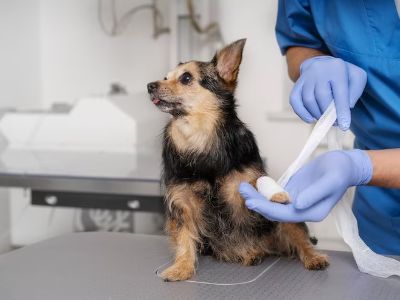
Now, as mentioned before, you can use TCP on dog wounds but, with proper method or instructions from a Vet. So, here are some tips you can consider for treating your furry friend’s wound using TCP antiseptic. But before I share some tips, remember – these tips are not applicable to open wounds.
#1. Dilute TCP with water
If you have to use TCP, you need to dilute this substance with water. This helps in reducing the concentration and strength of the original liquid. The dirt or debris that is causing infection or disrupting healing is removed from the wound easily with the diluted mix.
In addition, you can also use, boiled or distilled water to dilute TCP. They are more sterile and less likely to have impurities which can harm the dog’s wound. Here are a couple of tips to get you started with the dilution process:
- You can consider a ratio where you use 50% water and 50% TCP in the mix. You need to refer to the instructions on the TCP bottle and also get insights from the vet before you create the diluted solution. This is mainly because the original solution is meant for humans.
- To adjust the ratio, you can either use a syringe or a measuring cup and add the water accordingly. You can store the solution in a spraying bottle once you have mixed it properly.
- To make sure the solution is safe for dogs – mix 1 part TCP with 10 parts of water. This means if you use one cup of TCP, add 8-10 cups of water to it. This provides us with a 0.1% solution and is considered safe for treating wounds in dogs.
#2. Clean the wound
Once, you prepare the diluted solution, clean the dog’s wound. This will remove any debris or dust on the wound. Here are some ways you can clean your furry friend’s wound before using the solution:
- Use a syringe without a needle. Take some lukewarm water and slowly sprinkle it over the dog’s wound. This helps in removing the dirt, and blood from the wound.
- Use a liquid soap that is safe for your furry friend, meaning, the ones which do not retain any harmful fragrance, dyes, or chemicals. This will help in making the wound area cleaner.
- Once you clean the wound using soap, use gauze or a washcloth for wiping. Gently wipe the wound and make it more clean. Avoid rubbing or scrubbing the wound as it may result in bleeding or damage.
Continue the process until the wound is free of debris, dirt, or blood. If the dirt is more, you may have to change the soap and water frequently to avoid contamination and reinfection of the wound.
#3. Apply the diluted solution
After cleaning the wound using soap, you can wipe the wound using the diluted TCP solution. Dip a clean cloth and wipe the wound. Apply the solution to the affected area only. Because if you use it in other areas, there is a possibility of infection or disease.
The fur can absorb the solution and your dog may also lick the other area which can lead to different diseases. Repeat the process two or three times during the day and observe the changes in their condition.
Things to consider after using TCP on a dog wound
Now, once you complete treating their wound with diluted solutions, it’s not the job over. There are some aspects you need to consider afterwards.
- Monitor the wound – look for any signs suggesting redness, infection, swelling, pus, odour, heat, or pain. If you identify any of these, you must not use the solution again. You need to take your furry friend to your vet for treatment.
- Storage of diluted TCP – your dog might lick or ingest the solution if kept within their reach. This can create severe health issues and hence, it’s crucial for you to store the solution in such a way that it’s out of reach of your furry friend. Yes, it’s dilute, but, still, it can cause health problems.
- Prevent the dog from licking – if your furry friend makes an attempt to lick their wound post-treatment, you must prevent it from happening. In fact, for 15-20 minutes after applying the solution your dog must not lick or even rub their wound. Use a lightweight bandage to cover and safeguard the wound.
- Vet care – even after proper precautions and monitoring, it’s possible that the wound shows signs of infection, or bleeding. Regardless of the reason, you need to take your furry friend to the vet to contain the damage.
TCP Poisoning In Dogs
The TCP poisoning condition is rare but, quite fatal for our furry friends. In the majority of cases, it happens when a dog comes in direct contact with the substance. They ingest the solution in large amounts and the presence of phenol can cause some serious health issues.
A dog may suffer from kidney or liver damage, damage to the nervous system, and blood cells are also compromised. So, if your furry friend accidentally ingests this substance, they might have these health issues. Below are some signs which may help you identify whether your dog has TCP poisoning or not:
- Symptoms/Signs
The signs for TCP poisoning in dogs vary as per the amount of exposure. However, in general, you will see your dog suffering from diarrhoea, vomiting, lethargy, drooling, weakness, bruising, bleeding, jaundice, seizures, coma, tremors, or even death (excessive exposure).
- Diagnosis
A diagnosis for TCP poisoning is based on the prior medical history of the dog, clinical signs and some medical tests. A vet will conduct a blood test which will highlight low blood sugar, enzymes, high acidity in the blood, anaemia, or methemoglobinemia.
In addition, the vet might also insist on a urine test. The urine test helps in confirming the diagnosis of TCP poisoning in dogs if they find crystals or TCP metabolites. Their presence confirms dogs have absorbed or ingested TCP.
Furthermore, a vet might also conduct a liver biopsy to assess the degree of cell death and inflammation caused due to TCP ingestion. Also, an abdominal ultrasound is conducted in some cases to get insights into the shape and size of the liver and kidneys while looking for signs of fluid accumulation or internal bleeding.
Treatment for TCP poisoning in a dog
Treatment for TCP poisoning dogs mainly seeks to prevent further absorption of the poison and provide proper supportive care. Here is what you can anticipate from both treatments:
#1. Prevention of further absorption
This treatment mainly involves inducing vomiting, offering dogs activated charcoal or washing their skin. The course of action relies on the severity of symptoms and exposure to the substance.
The main aim is to remove a maximum portion of poison from the dog’s body. The vomiting is induced by the vet using hydrogen peroxide or apomorphine.
#2. Antidote
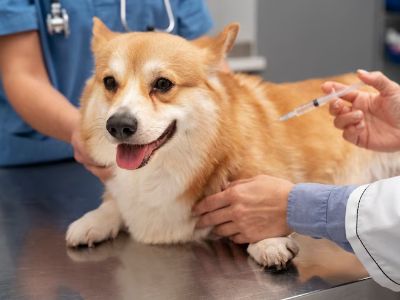
A vet will provide a specific antidote i.e. N-acetylcysteine (NAC). This medication helps in safeguarding their liver and also prevents further damage. It does this by elevating the production of glutathione.
Glutathione is a natural antioxidant and helps in reducing call death and inflammation for better recovery of the liver. However, it’s crucial to provide this antidote as quickly as possible.
#3. Supportive care
In this treatment, the dog is given fluids, glucose, oxygen, blood, antibiotics, and other medicines. This assists the dog in coping and recovering from the effects of the poison and also prevents further complications.
The purpose of providing such medication in supportive care is to support critical functions such as circulation, breathing, maintaining blood sugar levels, infection control, and relieving them from possible seizures and pain.
Looking at the severity of this condition, I can only suggest one thing – keep TCP out of your furry friends’ reach. Also, if you suspect them having ingested take them to the nearest clinic or hospital without trying to figure out any relieving treatment yourself.
FAQs
Can you put TCP on dogs’ paws?
No, if you plan on using TCP directly for treating wounds on their paws it’s a big no. You must use a diluted solution, that too for treating minor wounds. The reason why TCP is not used without diluting is that a dog’s skin may absorb the substance and cause vomiting, diarrhoea, weakness, seizures, tremors, lethargy, drooling, etc.
Are there any alternatives to TCP for treating dog wounds?
Yes, there are ample alternatives to TCP for treating dog wounds. Diluted hydrogen peroxide, iodine, chlorhexidine, and honey are some of the alternatives for TCP. All of these products retain antiseptic and antibacterial properties. This helps in promoting healing and preventing infection.
Which wounds in dogs are not to be treated using TCP?
If your dog has open wounds, broken skin, or has deep, large, bleeding or infected wounds, using TCP (both normal and diluted) is not advisable. Because it can cause irritation, inflammation, and tissue damage. It also halts the healing process and can cause blood loss as well. In addition, if the wounds are a result of a bite or caused by a foreign object it’s wise not to use it, not even the diluted one.
What types of wounds in dogs are treatable using TCP?
Minor cuts or wounds, lesions, or skin abrasions are the types of wounds that one can consider treating for their furry friend. Also, the solution needs to be diluted before applying. So, add 50% water to the mix. Use a clean cotton cloth to clean the wound and apply the solution to clear the dust and prevent infection.
Can You Use TCP On Dogs? Final Remarks
Trichlorophenylmethyliodosalicyl i.e. TCP is an antiseptic which retains phenol and halogenated phenols in it. This substance is toxic for dogs as it’s made for humans only. Still, this solution is useful in treating minor cuts and wounds in dogs. But, if a dog ingests this solution, it can lead to severe health issues.
Thus, as a dog owner, if you decide to use TCP for treating your dog’s wound, you need to dilute it. For diluting the solution you can use 50% of water and then use it for treating the wound. After you apply the diluted solution, you must ensure that your dog doesn’t lick or rub the area for at least 15 minutes. You can use the solution two to three times a day until the healing is done.
Remember, that you can only use TCP for treating minor wounds. Also, make sure your furry friend doesn’t ingest the substance. Because if the quantity is high, it can cause TCP poisoning and it’s quite a fatal condition and can even lead to death. So, even before using a diluted solution for treating the wound, I suggest you get your vet’s advice.
